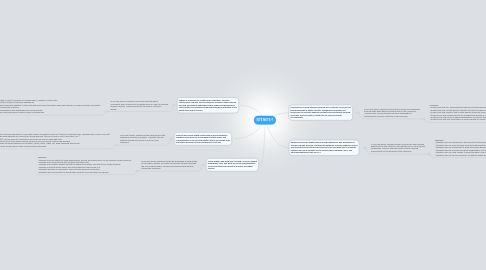
1. Model Digital-Age Work and Learning: Teachers exhibit knowledge, skills, and work processes representative of an innovative professional in a global and digital society.
1.1. In my own words: Teachers show their knowledge of technology to the school, parents, and other community members through the use of digital media. This will also help promote learning outside the classroom.
1.1.1. Examples: -Teachers may use twitter to tweet assignments, articles, and information for the students to get access to. -Teachers may communicate with students through e-mail. -Teachers may create a teacher website to display information and give access to the students. -Teachers may post grades online and allow students to get access to it. -Students may keep a class blog to communicate and post information. -Students may use podcasts to display their projects and information on the web.
2. Promote and Model Digital Citizenship and Responsibility: Teachers understand local and global societal issues and responsibilities in an evolving digital culture and exhibit legal and ethical behavior in their professional practices.
2.1. In my own words: Teachers model technology in the classroom correctly and legally. Teachers also use student learning instruction as a focus in the classroom.
2.1.1. Examples: -Students may have access to multiple copyright websites for information about copyright and fair use. (WEMTA Copyright Sites, Cyberbee kids, TEACH Act, etc.) -Students may have access to multiple valid websites for information during research. (Worldcat, Ebsco Host, Lexis-Nexis, etc.) -Students may have access to A Fair(y) Use Tail video for information about fair use and the copyright laws. -Students may use Google video chat to talk to other people around the world and learn about cultures and diversity. -Students may learn and practice proper document sharing of information, books, music, video, etc. when exploring technology. -Students may explore videos on YouTube to learn about other cultures around the world.
3. Engage in Professional Growth and Leadership: Teachers continuously improve their professional practice, model lifelong learning, and exhibit leadership in their school and professional community by promoting and demonstrating the effective use of digital tools and resources.
3.1. In my own words: Teachers collaborate with the digital community and contribute to the digital world in order to promote student learning. This also promotes the idea of a lifelong learner.
3.1.1. Examples: -Students may attend Webinars to gain knowledge on how to properly use technology in a specific content area. -Students may use Google maps and Google Earth to enhance real world experiences. -Students may have access to several school and community websites to stay informed about new information and events going on in school and the community. -Students may use Thinkfinity as a community technology resource. -Students may have access to online digital conferences to gain knowledge from professionals. -Students may attend technology workshops for information about specific forms of technology.
4. Facilitate and Inspire Student Learning and Creativity: Teachers use their knowledge of subject matter, teaching and learning, and technology to facilitate experiences that advance student learning, creativity, and innovation in both face-to-face and virtual environments.
4.1. In my own words: Teachers include their background knowledge of technology when helping students learn in the classroom. Teachers also incorporate their previous knowledge of technology to promote creativity in the classroom.
4.1.1. Examples: -Student may use GPS technology to enhance real world experiences. -Student may use a Smart Board to display class work or show individual work to the class. -Student may use Skype to talk to other people across the world and learn about cultures and diversity. -Students may use Google Docs to do and share group work or take class notes. -Students may use iMovie to show presentations on specific topics and content areas. -Students may use mini computers for quick research on a topic for partners and group work.
5. Design and Develop Digital Age Learning Experiences and Assessments: Teachers design, develop, and evaluate authentic learning experiences and assessment incorporating contemporary tools and resources to maximize content learning in context and to develop the knowledge, skills, and attitudes identifies in the NETS-S.
5.1. In my own words: Teachers create and promote new learning experiences in the classroom through the use of more modern technology. This will also help create a better learning environment for the students in the classroom.
5.1.1. Examples: -Students may use ProfilerPro to take surveys and see graphed results on a visual display. -Students may use iPads to show visual work with partners or group work. -Students may use PowerPoint to show visual work during presentations. -Students may use SNoodle to submit assignments, look at articles, look at group work, and take quizzes. -Students may use Mind Meister to allow the whole class to participate and make a web of information. -Students may use an Elmo Projector to digitally display work that was not originally digital.
